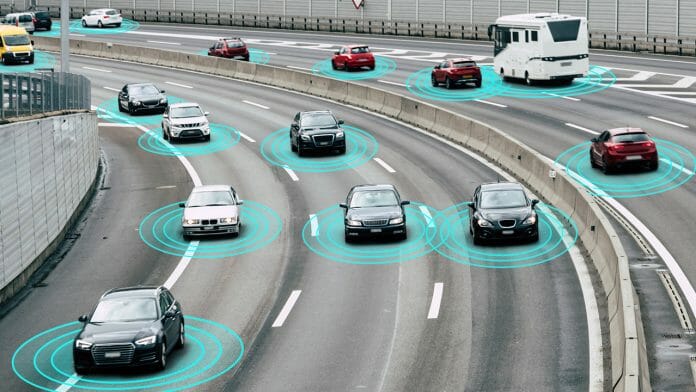5G has been a well-discussed topic for several years and for many, 5G may be nothing more than a faster version of 4G. Yet, 5G can be a catalyst for change that can transform personal and business landscapes. We anticipate, with digital adoption at its peak and with converging ecosystems, the next decade could see the acceleration of us disconnecting from wires and connecting machines and platforms. This is where the 5G ecosystem can fulfill game-changing potential, however, it should be considered within a strong cyber security and privacy envelope.
5G continues to evolve, with many voices and limited time to figure out what really matters to do business with 5G.
5G’s key value drivers
As a refresher, there are three pillars that describe 5G seeks to address:
1. More devices, supporting up to one million devices for every square kilometer e.g., Smart homes, smart cities, smart infrastructure, Web 3.0
2. Lower latency, aiming to reduce the time it takes to get a response to information sent. Research indicates 53 percent of people will leave a mobile page if it takes longer than three seconds to load 5G is significantly faster and can take just 5ms. Lower latency is expected to be critical for enabling key opportunities such as autonomous vehicles, which need real-time updates for passengers to remain safe.
3. Faster speeds, helping enhance broadband to crowded areas, enterprise collaboration, augmented and virtual reality.
5G is a US$4.3tn opportunity to transform products, services, and business models
When we ask clients what 5G impacts, in addition to telecoms itself, their responses are around financial services, healthcare, retail, entertainment, transport, and manufacturing. Industry professionals are looking at 5G from both near and long-term perspectives.
“Collaboration across the industry ecosystem, supported by secure & efficient data sharing, will unlock incremental revenue streams and new advanced analytic opportunities for CSPs [communication service providers]” says Will Cage, Global Head of Telco & Tech, Snowflake.
Sixty-six percent of healthcare providers have or are developing telehealth programs. 5G could completely overhaul the way healthcare is delivered. Jim Sarka, Johnson and Johnson CIO and Vice President of Business Technology Asia Pacific cites “We have been looking at how technologies like 5G can enable key capabilities to support our health care physicians. Specifically, spaces like professional education are among some that we see as important enablers for our customers and partners”. 5G wearables that continuously monitor sensory processing devices can help patients achieve wellness and independence and decrease healthcare costs by potentially enabling more people to be monitored from the home.
Instant 5G broadband – instant speed anywhere, any time
Using 5G, telcos or content distributors could stream events, like the Formula 1 Grand Prix, to provide a real-time fan experience to an entire nation. This provides opportunities to engage with a broader fan base and drive multiple interaction points before, during and after the event.
This flexibility also enables businesses to seamlessly connect new platforms, be they health, supply chain and home offices, which became more pronounced during the recent COVID-19 pandemic. KPMG sees that working remotely and access to data platforms from anywhere will be an ever-increasing trend as the startup environment continues to innovate around emerging areas such as Web 3.0.
5G is delivering dramatic changes to media and entertainment
Mobile operators in Hong Kong jointly presented China’s first 5G 4K live-streaming Chinese music charity concert with the Hong Kong Chinese Orchestra in Hong Kong (SAR). This showcased the strength of the 5G LIVE Up broadcasting solution during the pandemic in 2020. The 5G solution provides performing arts organizations, key opinion leaders, buskers, yoga teachers etc. as well as online tutors with a low-cost yet reliable 5G live broadcasting experience. The ease of use and flexible pricing options allows users to easily manage an online business and potentially grow their customer base and revenue.
5G Demand in South Korea, consumers averaging 27GB data every month
Weeks after launching 5G, a South Korean operator announced that the average data consumption per 5G user had already gone up by 225 percent over the 4G average, despite the price of the unlimited package it offers on 5G starting at 68 percent higher than 4G. Primarily, entertainment services like ultra-widescreen broadcasting (12K UHD) and gaming over 5G and live sports broadcasting are driving such growth in data consumption.
At sporting events, 5G could deliver: video streams showing an athlete’s point of view in real-time; virtual reality experiences and; facial recognition for venue security and more.
5G is expected to be different to other Gs, start preparing for the change today!
ASEAN operators have the opportunity to capture six to nine percent in additional revenues by 2025. A significant boost to today’s average revenue per user. Additional opportunities will likely come through carrier service providers (CSPs) partnering to enable differentiated services, especially those with large IoT deployments.

By Guy Edwards Partner – Head of Technology, Media & Telecommunications (TMT) KPMG in Malaysia









